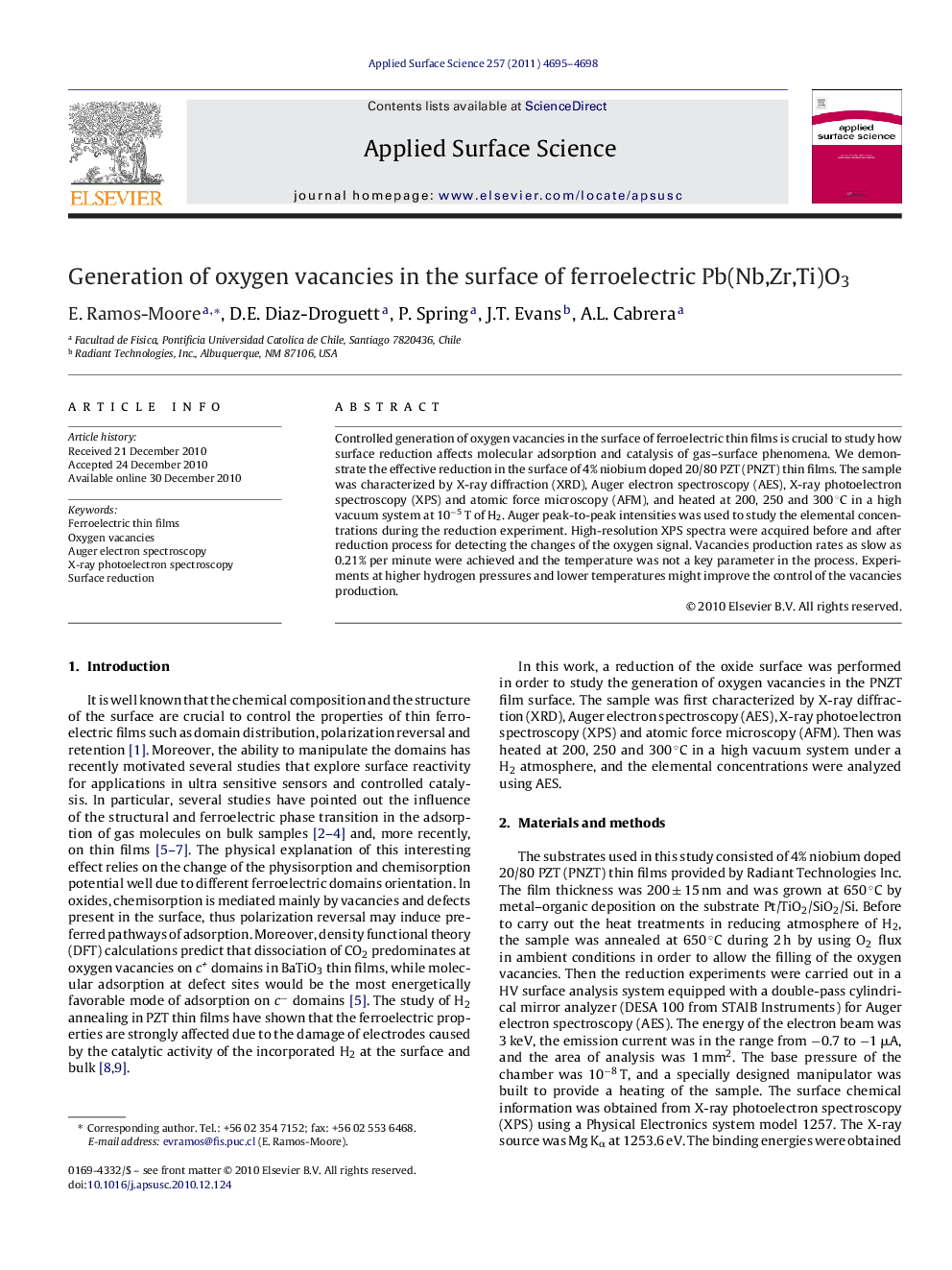| Article ID | Journal | Published Year | Pages | File Type |
|---|---|---|---|---|
| 5367959 | Applied Surface Science | 2011 | 4 Pages |
Controlled generation of oxygen vacancies in the surface of ferroelectric thin films is crucial to study how surface reduction affects molecular adsorption and catalysis of gas-surface phenomena. We demonstrate the effective reduction in the surface of 4% niobium doped 20/80 PZT (PNZT) thin films. The sample was characterized by X-ray diffraction (XRD), Auger electron spectroscopy (AES), X-ray photoelectron spectroscopy (XPS) and atomic force microscopy (AFM), and heated at 200, 250 and 300 °C in a high vacuum system at 10â5 T of H2. Auger peak-to-peak intensities was used to study the elemental concentrations during the reduction experiment. High-resolution XPS spectra were acquired before and after reduction process for detecting the changes of the oxygen signal. Vacancies production rates as slow as 0.21% per minute were achieved and the temperature was not a key parameter in the process. Experiments at higher hydrogen pressures and lower temperatures might improve the control of the vacancies production.
Research highlightsⶠManipulation of ferroelectric domains motivates the exploration of surface reactivity ⶠOxygen vacancies affects gas-surface interaction ⶠPNZT surface reduction was monitored by AES and XPS ⶠTemperature was not a key parameter of the process in the range of 200-300 °C ⶠOxygen vacancies generation rates as slow as 0.21% per minute were achieved.
